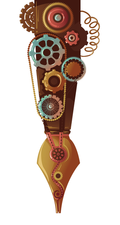Open source e-paper
Open Hardware – Inkplate 6

© Lead Image © Lorelyn Medina, 123RF.com
Combining open firmware with recycled hardware, Inkplate launches a crowdfunding campaign for an open source e-paper display.
From the start, open hardware has repurposed used technology. Companies like Minifree and Technoethical have based their entire business plans around such recycling. By the time you read this article, these companies will have been joined by a crowdfunding campaign for Inkplate 6 [1], an e-paper display that combines open source firmware with parts from used Kindle e-readers.
Inkplate 6 is developed by e-radionica.com [2], a company started by David Zovko when he was 16. The company's first product was the Croduino Basic microcontroller, an Arduino-compatible board named for the fact that it was manufactured in Croatia. Today, e-radionica.com offers 70 Arduino-compatible boards, all of which are open hardware. "Since openness enabled my creation of the first board," Zovko says, "I have committed that all my maker projects will be open source."
E-paper (aka electronic paper or e-ink) is a display technology that imitates the look and resolution of ink on paper (Figure 1). Unlike the typical computer monitor, e-paper reflects light, just like paper. As a result, e-paper not only reduces eye strain and has a wider viewing angle, but it is readable in direct sunlight without appearing to fade. Although e-paper color displays have existed for close to a decade, the majority of e-paper is currently grayscale. The most popular use of e-paper is in e-readers like the Kindle or the Kobo, but other uses include arrival and departure displays in airports, electronic billboards, and smartphone displays.
[...]
Buy this article as PDF
(incl. VAT)
Buy Linux Magazine
Subscribe to our Linux Newsletters
Find Linux and Open Source Jobs
Subscribe to our ADMIN Newsletters
Support Our Work
Linux Magazine content is made possible with support from readers like you. Please consider contributing when you’ve found an article to be beneficial.

News
-
Two New Distros Adopt Enlightenment
MX Moksha and AV Linux 25 join ranks with Bodhi Linux and embrace the Enlightenment desktop.
-
Solus Linux 4.8 Features Removes Python 2
Solus Linux 4.8 has been released with the latest Linux kernel, updated desktops, and a key removal.
-
Zorin OS 18 Hits over a Million Downloads
If you doubt Linux isn't gaining popularity, you only have to look at Zorin OS's download numbers.
-
TUXEDO Computers Scraps Snapdragon X1E-Based Laptop
Due to issues with a Snapdragon CPU, TUXEDO Computers has cancelled its plans to release a laptop based on this elite hardware.
-
Debian Unleashes Debian Libre Live
Debian Libre Live keeps your machine free of proprietary software.
-
Valve Announces Pending Release of Steam Machine
Shout it to the heavens: Steam Machine, powered by Linux, is set to arrive in 2026.
-
Happy Birthday, ADMIN Magazine!
ADMIN is celebrating its 15th anniversary with issue #90.
-
Another Linux Malware Discovered
Russian hackers use Hyper-V to hide malware within Linux virtual machines.
-
TUXEDO Computers Announces a New InfinityBook
TUXEDO Computers is at it again with a new InfinityBook that will meet your professional and gaming needs.
-
SUSE Dives into the Agentic AI Pool
SUSE becomes the first open source company to adopt agentic AI with SUSE Enterprise Linux 16.

